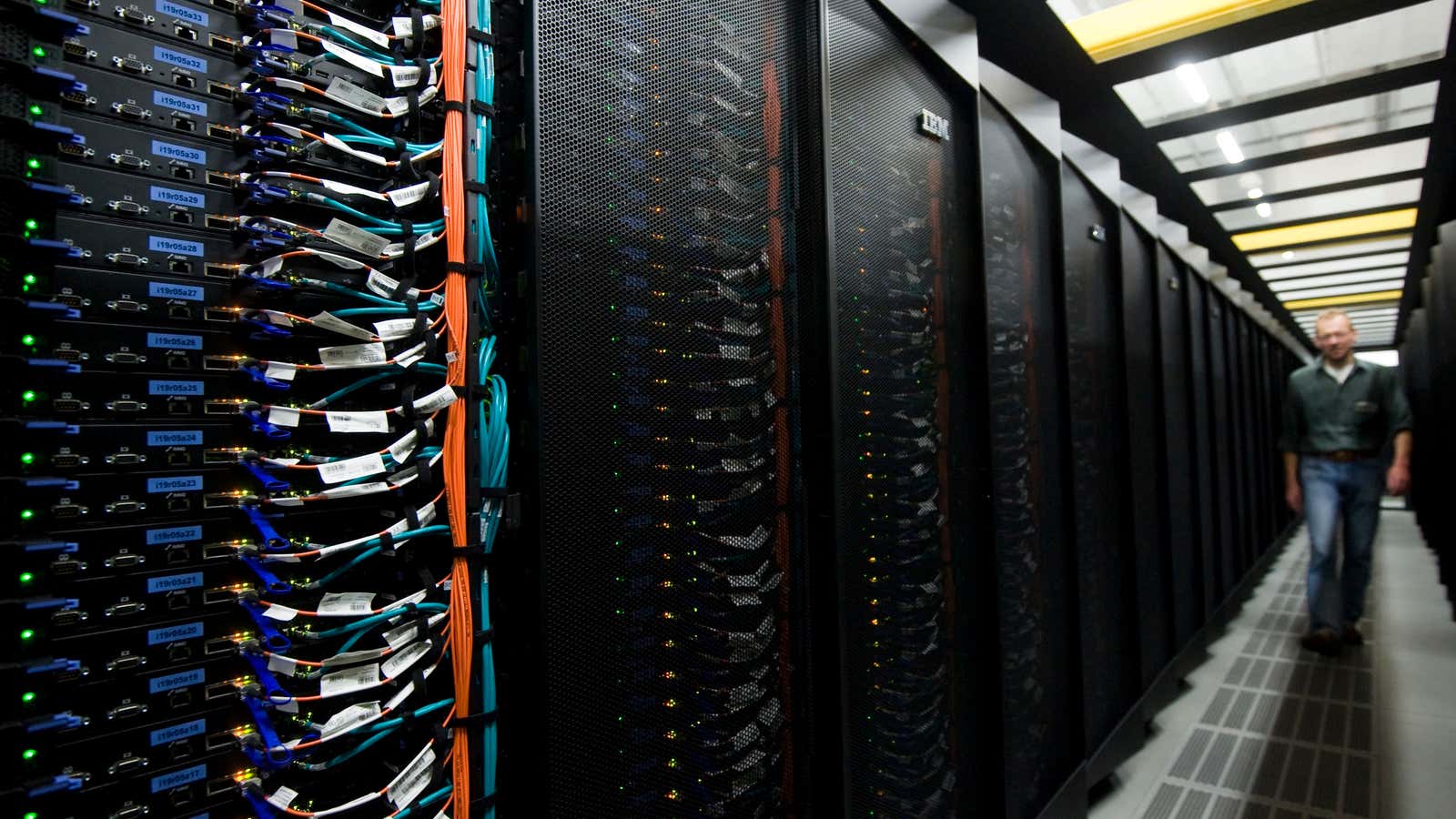Add up the combined computing power of the 500 fastest supercomputers in the world—that’s billions upon billions of dollars worth of hardware—and stack it up against to the raw processing power of every computer currently producing the alternative currency bitcoin, and what do you get?
The network of computers “mining” bitcoin is more powerful—eight times more powerful, in fact.
And that’s not all: The bitcoin network also qualifies as the world’s first exascale computer, meaning it’s capable of a quintillion floating point calculations per second. Some people argue that exascale computing will make possible everything from predicting the effects of climate change to producing energy with fusion. Supercomputers aren’t expected to achieve that speed until sometime around 2020.
However, bitcoin mining is distributed among the multitude of machines that devote computing power to the network, helping to solve cryptographic puzzles every 10 minutes, for which they are sometimes rewarded with new bitcoins. And the bitcoin network has become so specialized that much of it cannot be used for any other purpose. So what bitcoin has wrought is the world’s fastest supercomputer that can only be used to mine bitcoin.
Add this to the $150,000 a day bitcoin miners are collectively spending on electricity to produce about half a million dollars worth of bitcoin, and the scale of the computing resources currently devoted to producing the virtual currency really comes into perspective.
